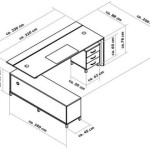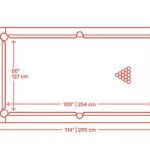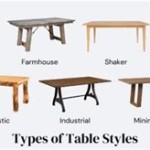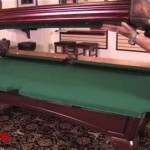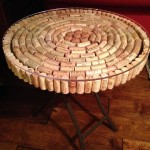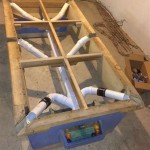The Enduring Appeal of the Mid-Century Modern Vanity Table
The mid-century modern aesthetic, characterized by its clean lines, organic shapes, and functional design, continues to resonate with contemporary sensibilities. Within this design movement, the mid-century modern vanity table holds a special place, offering both practicality and a distinct visual appeal. This article explores the defining characteristics of these vanity tables, their key design elements, materials employed in their construction, and factors to consider when selecting one.
The mid-century modern design era, flourishing roughly from the mid-1940s to the mid-1960s, was a period of significant innovation in furniture design. This era saw a departure from the ornate styles of previous generations, embracing a simpler, more streamlined approach. The focus shifted to functionality, affordability, and incorporating new materials and manufacturing techniques. The vanity table, traditionally a symbol of luxury and elaborate craftsmanship, underwent a transformation, reflecting the core values of the mid-century modern movement.
Key Design Elements of Mid-Century Modern Vanity Tables
Several design elements are characteristic of mid-century modern vanity tables. These features contribute to their unique visual identity and functional appeal.
Clean Lines and Geometric Forms: Mid-century modern designs prioritize clean lines and geometric forms. Vanity tables from this era typically feature straight edges, rectangular or slightly curved tabletops, and often incorporate geometric patterns in the details, such as drawer pulls or leg designs. Ornate carvings and elaborate embellishments are notably absent. The emphasis is on simplicity and visual clarity.
Tapered Legs: Tapered legs are a hallmark of mid-century modern furniture. These legs, often made of wood or metal, angle outwards from the table's frame, creating a sense of lightness and airiness. They contribute to the overall minimalist aesthetic and prevent the vanity from appearing bulky or heavy.
Minimalist Hardware: The hardware on a mid-century modern vanity is typically understated and functional. Drawer pulls are often simple, geometric shapes made of metal, wood, or Bakelite. Elaborate handles or knobs are avoided in favor of clean, unobtrusive designs that complement the overall aesthetic.
Built-in Storage: Mid-century modern design emphasizes practicality, and vanity tables from this era often feature built-in storage solutions. Drawers are a common feature, providing ample space for cosmetics, toiletries, and other personal items. Some vanities may also include hidden compartments or shelving for additional organization.
Attached Mirrors: Many mid-century modern vanity tables incorporate an attached mirror. These mirrors are typically rectangular or oval in shape and are often framed in wood that matches the table's construction. The mirrors are usually positioned to provide optimal viewing while seated at the vanity.
Materials Commonly Used in Mid-Century Modern Vanity Tables
The choice of materials played a crucial role in defining the aesthetic and durability of mid-century modern vanity tables. Certain materials were favored for their affordability, availability, and ability to be molded into the desired shapes.
Wood: Wood was a primary material utilized in the construction of mid-century modern vanity tables. Teak, walnut, and birch were particularly popular choices due to their rich colors, attractive grain patterns, and durability. Solid wood construction was common, but veneer was also used to create more affordable options.
Metal: Metal was often incorporated into the design of mid-century modern vanity tables, primarily for the legs and hardware. Chrome and brass were frequently used for their durability and aesthetic appeal. Metal legs provided stability and a sleek, modern look.
Glass: Glass was mainly used for the mirrors attached to the vanity tables. Clear glass was the standard option, but some designs incorporated tinted or frosted glass for a more unique look.
Formica: While not always visible, Formica, a type of laminate, was sometimes used as a durable and easy-to-clean surface for the vanity tabletop. Formica provided a practical and affordable alternative to solid wood, particularly in mass-produced furniture.
Vinyl: In some vanity designs, vinyl was used to upholster seating or to add a decorative touch to the vanity itself. Vinyl was a popular material during the mid-century modern era due to its durability, affordability, and resistance to stains.
Factors to Consider When Selecting a Mid-Century Modern Vanity Table
Choosing a mid-century modern vanity table requires careful consideration of several factors to ensure it meets individual needs and complements the existing decor. These factors include size, condition, storage capacity, original design versus restoration, and price.
Size and Dimensions: Before purchasing a vanity table, it is essential to measure the available space to ensure a proper fit. Consider the overall dimensions of the table, including the width, depth, and height, as well as the height of the attached mirror (if applicable). It is important to allow sufficient space for the vanity and a comfortable seating arrangement.
Condition and Authenticity: When acquiring a vintage mid-century modern vanity table, it is crucial to assess its condition. Examine the piece for any signs of damage, such as scratches, dents, or water stains. Check the stability of the legs and the functionality of the drawers. Authenticity is another factor to consider. Verifying the manufacturer or designer can add value and historical significance to the piece.
Storage Capacity: Evaluate the storage capacity of the vanity table to determine if it meets individual needs. Consider the number and size of the drawers, as well as any additional storage compartments or shelves. Ensure that the storage space is sufficient to accommodate the essential cosmetics, toiletries, and accessories.
Original Design Versus Restoration: Decide whether to seek an original, unrestored mid-century modern vanity table or a restored piece. Original pieces may possess a unique charm and historical value, but they may also require some restoration work. Restored vanities, on the other hand, have been refurbished to a like-new condition, offering a more pristine appearance.
Price and Budget: The price of mid-century modern vanity tables can vary significantly depending on their condition, authenticity, and rarity. Before beginning the search, establish a budget to guide the purchasing decision. Compare prices from different sources and consider the overall value of the piece in relation to its cost.
Seating Considerations: The vanity table requires suitable seating. While some vanity table sets include a matching stool or chair, it is often necessary to select seating separately. Mid-century modern style chairs or stools with clean lines and complementary materials are ideal. Consider the height of the vanity and the comfort of the seating option.
By carefully considering these factors, individuals can select a mid-century modern vanity table that not only enhances their living space but also provides a functional and aesthetically pleasing addition to their daily routine. The enduring appeal of these pieces lies in their timeless design, practical functionality, and connection to a significant era in the history of furniture design.

Mid Century Vanity Desk Set 52 West Elm

Martin Svensson Home Mid Century Modern Cinnamon Vanity Desk Table With Flip Top Mirror And Storage 30 In H X 44 W 18 D 6808828 The Depot

West Elm X Pbt Mid Century Vanity Desk Set Midcenturyvanitydesk Modern Furniture Interior

30 Elegant Mid Century Dressing Tables And Vanities Digsdigs

Scandinavian Vintage Teak Dressing Table With Adjustable Mirrors Denmark 1960s

Mid Century Vanity Desk Set 52 Modern

Mid Century Vanity Dressing Table 1960s For At Pamono

Farfarview Vanity Desk With 2 Large Drawers 47 Mid Century Makeup Table For Women Girls Dressing Bedroom Living Room Brown Style

Gold And Midcentury Vanity Table In A Dream Dresssing Room

Mid Century Dressing Table Console Nordic Danish Vanity Unit Vintage Solid Wood Retro Bureau Desk Dresser


